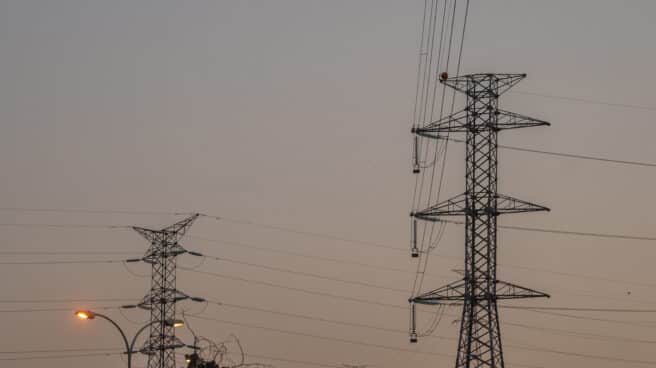

tension towers
Early this Thursday morning, the European Union concluded negotiations on modifications to the electrical system that had been ongoing in recent months and led by Energy Transition Minister Teresa Ribera. The purpose of this new regulation is to protect consumers so that they do not suffer from the volatility they have experienced recently due to the war in Ukraine or rising oil prices.
Much of what is included in the text, which will be published in the coming weeks, will strengthen consumer protection. The idea is that users won’t have to worry about turning on the oven or washing machine at certain times of the day because it’s cheaper. We also want to eradicate the lack of such wild daily fluctuations as those to which the market has accustomed us, where it is not uncommon to see electricity provided for free on Saturday instead of paying €200 per MWh 48 hours later.
States should therefore then take measures to reduce prices for vulnerable and disadvantaged consumers, with provisions to avoid “unjustifiable distortions of the internal market”, in the words of the European Commission itself.
And how to achieve this? Mainly with so-called CFDs, a type of long-term contract that is considered underdeveloped throughout the block. Unlike a commercial contract, a contract for difference is concluded between the electricity producer and a government agency for a period of up to 15 years. The signatories agreed on a range or corridor within which electricity prices could fluctuate freely.
But what happens if market prices fall below the set range? The state will compensate the company so that it does not suffer losses. This way, countries will protect consumers and users will not have to pay for the rollercoaster of the electricity market. CfD bidirectional communication will be mandatory for new renewable energy projects and nuclear power plants, but only if subsidies are involved.
Bilateral CFDs will apply to investments in new generation capacity based on wind, solar, geothermal, dam-free hydroelectric and nuclear power.
Customers will also benefit as extraordinary revenue from these contracts will be redistributed to end users. The agreement, in turn, will allow the fee to be used to finance the costs of direct price support plans or investments aimed at reducing the costs of electricity for end consumers.
It’s also worth remembering that Spain has also developed a new plan to make our country’s energy bills less volatile. The new methodology aims to stimulate consumption during the cheapest hours – hours with lower demand – by offering better prices for both consumption and contracted electricity during these hours.
The aim of the current bill is to promote energy savings, improve energy efficiency and achieve the gas emission reduction levels set in the 2030 Agenda. With the new meter, it also helps users avoid constantly looking at the clock and installing appliances from then on. the cost is calculated in a basket with the cost of megawatt-hours, distributed by calculation taking into account long-term and medium-term market prices.
Nuclear power
The European Commission understands that to lower electricity prices it must promote renewable energy sources and phase out fossil fuels and other fuels that are harmful to the environment. Nuclear power, which does not pollute the environment but is considered dangerous in case of system failures, has been one of the main obstacles that various countries have had to overcome. France, the champion of this technology, fought hard to defend its value against other powers such as Germany or Spain.
The final agreement therefore maintains France’s position of strength and nuclear power plants will be able to benefit from the new types of wholesale contracts that the new rules want to promote. However, Spain does not want to have factories and plans to close them in the coming years.
Source: El Independiente